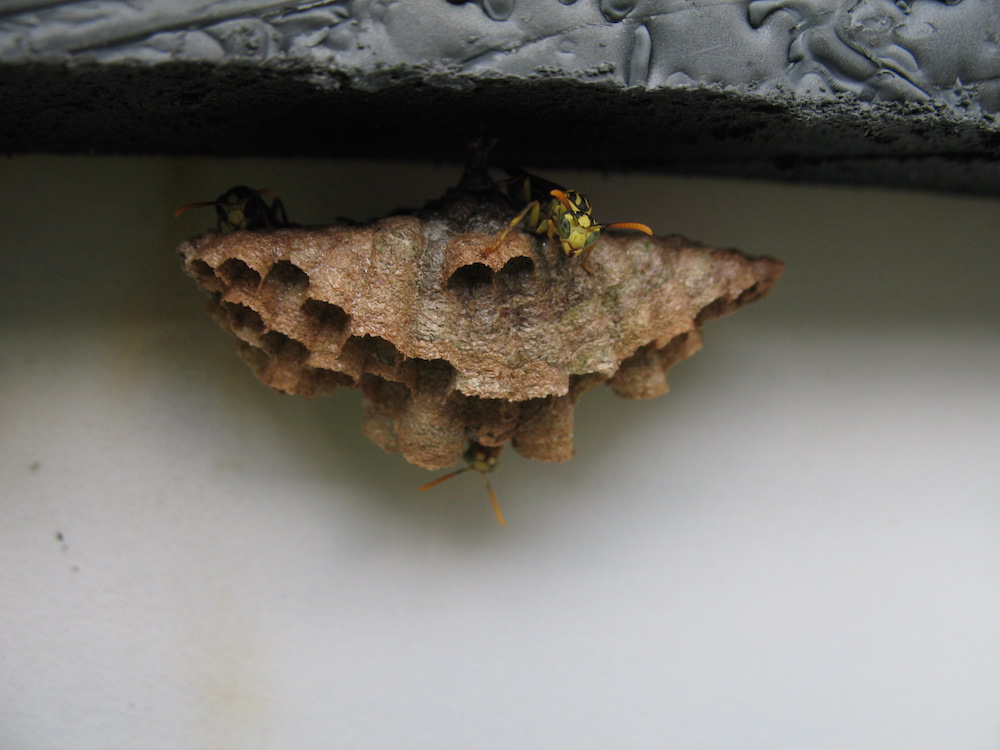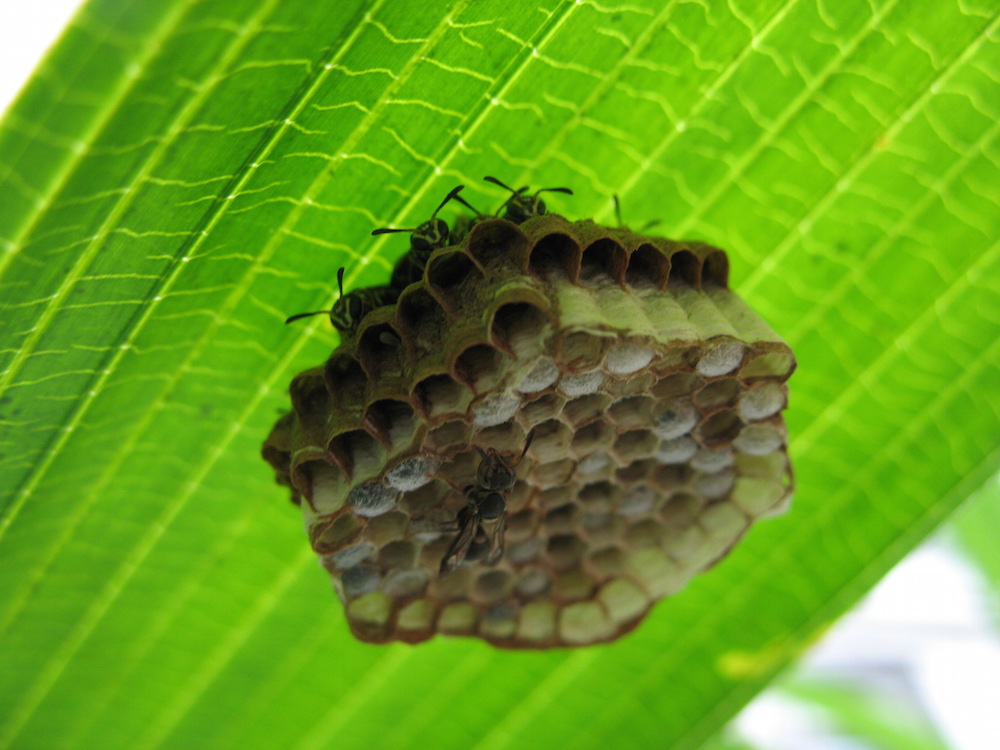Mind Meld: Social Wasps Share Brainpower

Wasps that live in large, social colonies may "share" brainpower, a new study finds.
It takes a lot of brainpower to socialize. Animals that are social typically have large brains, or at least large areas in their brains that control higher cognition. But the opposite is true for wasps, the researchers found. As wasps become more social, the brain regions responsible for complex cognition decrease in size.
Perhaps social wasps make up for these smaller "higher thinking" areas by working together and sharing brainpower, the researchers said. They call the new finding the "distributed cognition hypothesis," which assumes that group members can rely on social communication, instead of individual cognition, to survive. [Gallery: Dazzling Photos of Dew-Covered Insects]
"The idea is basically that, by communicating and responding to colony mates, a social insect is under less pressure to assess and respond to its environment on its own," said lead researcher Sean O'Donnell, a professor of biodiversity, earth and environmental science at Drexel University in Philadelphia. "Group members can share information and help each other solve problems."
To investigate, the researchers looked at 180 female wasps from 29 different species from Costa Rica, Ecuador and Taiwan. Some wasps were solitary; some lived in small, simple colonies; and others lived in large, complex colonies.

After collecting and preserving the wasps, they embedded the wasps' heads in plastic resin. Then, the researchers cut the wasps' heads into thin slices so they could see and measure the internal brain structures under a microscope.
They looked at several brain structures, but focused on the mushroom bodies — named for their distinctive mushroomlike shapes — which are thought to play a role in complex behaviors such as multisensory integration, learning and memory.
Get the world’s most fascinating discoveries delivered straight to your inbox.
Solitary wasps had significantly larger mushroom-body structures than the social wasps did, the researchers found.
Brain matter in this higher thinking area seemed to decrease as the wasps became social, O'Donnell told Live Science in an email. However, the researchers didn't find any brain changes associated with other aspects of complex colony structures, he said.
The finding supports the distributed cognition hypothesis, O'Donnell said. Insects evolved smaller mushroom bodies as they grew more social, likely because they could rely on social communication instead of individual braininess, he said.
Furthermore, having a smaller mushroom body likely saves energy, allowing the wasp to spend energy on other activities, O'Donnell said.
The results differ strikingly from those of studies on the brains of vertebrates, such as fish, birds and primates. Those studies found that vertebrates generally develop more complex and larger brains as they become more social. While these brainy species can work together, they also have conflict because they're capable of complex thought and can depend on themselves for survival.
But social wasps often don't have these types of problems.
"Unlike most vertebrate societies, insect colonies are usually family groups — offspring that stay and help their parents," O'Donnell said in a statement. "Although there can be family strife, the colony often succeeds or fails as a unit."
The finding suggests that insect societies evolved via a different path than vertebrate societies — "one that emphasizes coordination rather than social conflict," O'Donnell told Live Science.
It's "intriguing" that brain evolution may be different in groups that have less conflict, said Michael Sheehan, an assistant professor of animal behavior at Cornell University who was not involved with the study.
"In wasps, it seems like they're sharing the cognitive load," Sheehan said. But the study also raises other questions. It would be valuable to compare brain size in different wasp types, as well as in other insects, and then see how these size differences correlate with behavior, Sheehan said.
The study will be published online Wednesday (June 17) in the journal Proceedings of the Royal Society B.
Follow Laura Geggel on Twitter @LauraGeggel. Follow Live Science @livescience, Facebook & Google+. Original article on Live Science.

Laura is the archaeology and Life's Little Mysteries editor at Live Science. She also reports on general science, including paleontology. Her work has appeared in The New York Times, Scholastic, Popular Science and Spectrum, a site on autism research. She has won multiple awards from the Society of Professional Journalists and the Washington Newspaper Publishers Association for her reporting at a weekly newspaper near Seattle. Laura holds a bachelor's degree in English literature and psychology from Washington University in St. Louis and a master's degree in science writing from NYU.
